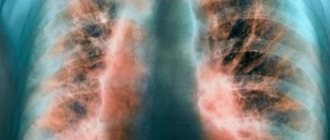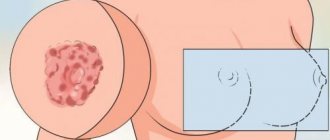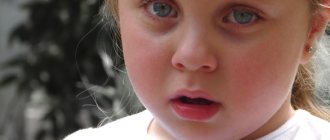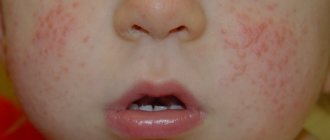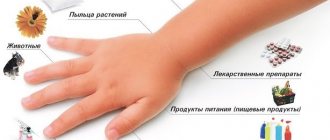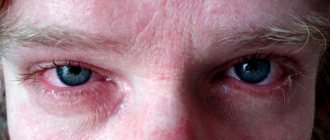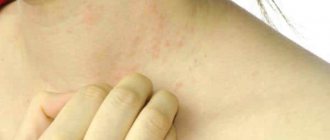Every year the number of people who suffer from neurodermatitis is growing. Symptoms and treatment are familiar to all experienced dermatologists. The disease is characterized by inflammation of the skin and constant itching. In most cases, the disease manifests itself in childhood and accompanies a person throughout his life, but there are cases of the disease occurring in adulthood under the influence of stress.
Causes of neurodermatitis
The first reason for the development of the disease is considered to be delayed allergic reactions. They arise due to the high content of class E immunoglobulins, which are inherent in the human body at the genetic level. When any allergen enters the bloodstream, an inadequate immune reaction quickly occurs, involving the skin and nervous system in the chemical process. The following factors can provoke neurodermatitis:
- use of synthetic hygiene products;
- strong psycho-emotional overexcitation;
- the presence of herbicides and nitrates in food;
- poor environmental conditions;
- contaminated drinking water;
- taking medications without consulting a doctor.
Neurodermatitis on the hands of adults is considered an occupational disease of cleaners, medical personnel, massage therapists, cooks and construction workers.
Signs
Symptoms of neurodermatitis are to some extent characteristic of any skin disease that occurs against the background of an allergic reaction. The approximate sequence of the defeat is as follows:
- The initial stage is the formation of small papules that are pale red in color. As a rule, large areas are affected, where noticeable spots appear.
- In the area of the rash, the skin is constantly itchy; as a result of scratching, the epidermis is irritated even more, which causes new rashes to appear.
- The skin becomes dry and constantly peels. There is a risk of wound infection by pathogenic microorganisms, especially on the extremities.
In children, the disease manifests itself as weeping peeling of the skin and small red rashes. A typical picture of neurodermatitis can be seen in the photo. In adults, it most often appears on the legs and arms, especially in the folds.
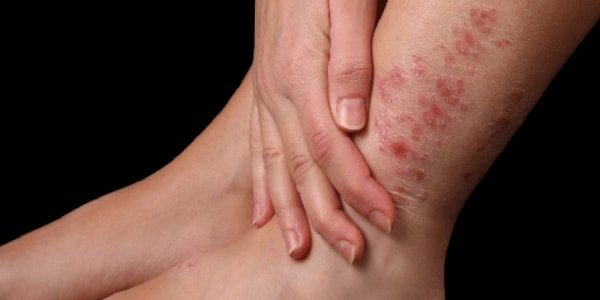
People often confuse neurodermatitis with similar diseases - eczema and psoriasis . There are signs that will help you correctly identify the problem:
- The skin usually does not swell; the disease is chronic, not acute.
- There are no pustular rashes characteristic of oily seborrhea.
- The lesion has vague contours, and in psoriasis the plaques are sharply defined.
- Exacerbation upon contact with an allergen, especially food.
- The so-called white dermographism. After running a pencil over the skin, after 3-5 seconds a white line appears on it, which does not disappear for a long time.
In the photo below you can see skin affected by neurodermatitis.
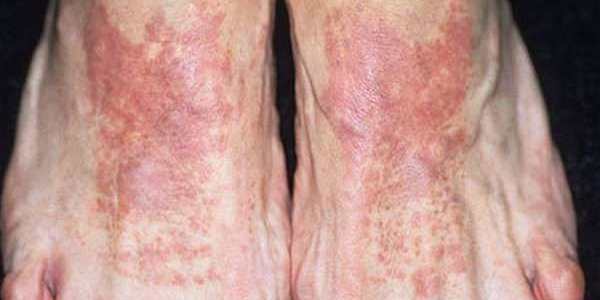
Symptoms of the disease
The disease is seasonal, so symptoms are pronounced in winter. The initial stage is manifested by itching and dry skin in the expected areas of future rashes. More often, foci of neurodermatitis are localized on the flexor surfaces of the fingers, hands and elbows. Afterwards, the skin acquires a reddish tint and begins to peel off.
If the patient does not respond to the changes described above, then the initial stage of the disease passes into the acute stage. The following symptoms are observed:
- formation of small nodules on the skin;
- soreness of the affected areas after taking water procedures;
- increased skin pattern (crack);
- darkening or lightening of skin color;
- weeping with the formation of crusts.
During this period, patients experience severe itching, which is most pronounced at night.
Advanced neurodermatitis leads to the appearance of secondary symptoms of the pathological process. Insomnia, fatigue, apathy, and weight loss occur. Due to disruption of the cardiovascular system, there is a decrease or increase in blood pressure, enlargement of lymph nodes and secretion of gastric juice.
Patients with neurodermatitis are characterized by white dermographism - a perverted vascular reaction. If you run a finger or other non-sharp object across a person’s skin, a white stripe remains for a long time (more than 5 minutes). This condition occurs due to vasospasm under the influence of the nervous system.
Classification of skin diseases
Doctors distinguish several types of the disease. Depending on the degree of skin damage, there are 2 main forms of the disease:
- Limited neurodermatitis is considered the most harmless. With it, you can observe small foci of skin lesions. Plaques consist of small nodules. Most often they are located on the neck, under the knees and in the elbow bends. In the middle of each cluster there are large nodules, the size of which is comparable to the head of a pin.
- Diffuse neurodermatitis is characterized by a large number of skin lesions. As a rule, they are located in the bends of the knees and elbows, near the anus, in the neck and in the groin folds. In children, lesions often appear on the head. In some places, the lesions merge with each other, and as a result, lichenized areas of skin are formed, which sometimes begin to become damp. The consequence of this type of neurodermatitis can be infection with pyoderma or lymphadenitis.
Some doctors call the diffuse form atopic dermatitis. Many babies suffer from this disease . Depending on the nature of the skin lesion, the following types of disease are distinguished:
- psoriasiform neurodermatitis;
- decalving;
- depigmented;
- linear;
- hypertrophic;
- follicular.
Very often, symptoms of several types of the disease can be observed in patients. In this case, doctors have to spend a lot of time drawing up a program for healing the body.
Diagnosis of neurodermatitis
If you notice the above symptoms, you should contact an allergist or dermatovenerologist. The specialist will first examine the patient, study complaints and medical history. Afterwards the following diagnostic procedures are prescribed:
- general blood analysis;
- blood for determination of immunoglobulins;
- dermatoscopy;
- Ultrasound of skin and fatty tissue.
In case of extensive neurodermatitis, a skin biopsy is required. To determine the allergen that provokes the disease, skin tests are performed.
Causes and diagnosis
Doctors say that most often neurodermatitis occurs in those people whose parents suffered from skin diseases. However, a number of other reasons can be identified:
- allergic reactions;
- gastrointestinal problems;
- stress and depression;
- regular violation of the daily routine;
- taking certain medications;
- working with harmful and dangerous chemicals.
Doctors say that it is necessary to carefully analyze the patient’s lifestyle in order to identify the cause. The doctor is obliged to collect complete information about the patient. He will clarify whether close relatives suffered from skin diseases. The doctor is also interested in the time when the first signs appear. Some patients can talk about the supposed causes of the disease. Finally, dermatologists are interested in how the patient has previously responded to vaccinations and various medications. After talking with the patient, doctors prescribe the following tests:
- biochemical and general blood tests;
- coprogram;
- stool tests for the presence of worms and parasites;
- stool analysis for dysbacteriosis;
- immunogram;
- allergy tests;
- skin scraping.
Only after collecting all the tests can doctors form a complete picture of atopic neurodermatitis. Symptoms and treatment are well described in many textbooks, but sometimes it is difficult to identify all the causes. This is why diagnosis can take a long time.
How to get rid of neurodermatitis?
The main goals of therapy are to eliminate or reduce the symptoms of the disease, restore the structure of the skin, prevent complications and get rid of the causes of skin lesions. Before you begin treatment, you need to stop contact with the identified allergens. If a skin reaction is triggered by food, then a hypoallergenic diet is prescribed, which you can learn about here. Chocolate, eggs, citrus fruits, tomatoes, nuts and foods with dyes must be excluded from the diet. You cannot eat smoked meats, pickles, fast food, fatty meat and fish broths.
Drug treatment of neurodermatitis includes the following medications:
- antiallergic;
- sedatives;
- vitamin and mineral complexes;
- immunostimulants;
- antibiotics (in case of bacterial infections);
- hormones (in severe forms of the disease).
Drug therapy is prescribed strictly individually under the supervision of the attending physician. Self-medication can aggravate your health condition and cause complications.
Patients with neurodermatitis must refrain from using hand cosmetics - creams, liquid soap, shower gels - for the period of treatment. It is better to use baby soap that contains moisturizing ingredients. In the future, hypoallergenic cosmetics are selected, settling on one suitable brand. This minimizes the risk of relapse of the disease.
Prevention
Despite the fact that it is impossible to completely cure neurodermatitis, proper prevention will reduce the likelihood of exacerbations and their duration. Compliance with the following rules will help with this:
- reduce contact with allergens to a minimum;
- wear shoes made of natural materials, socks made of cotton, avoid synthetics;
- give your feet rest, take baths with strengthening decoctions more often;
- use nourishing cream;
- ventilate the room, regularly do wet cleaning;
- strengthen the nervous system, avoid stress;
- go to the sea, sea water and clean air have a beneficial effect on the skin.
If you follow the rules of treatment, diet and prevention, the consequences of neurodermatitis will not cause severe harm to your health.
External treatment of neurodermatitis
The symptoms of the disease can be eliminated with the help of external medications. Antiallergic and antifungal ointments are widely prescribed to help eliminate itching and flaking of the skin. For severe rashes, use ointments with corticosteroids (hormonal agents), for example, cortisone or mometasone. They quickly eliminate the inflammatory reaction, change metabolism and accelerate the restoration of skin structure. Treatment with such ointments should be short-term to avoid side effects: skin pigmentation, withdrawal syndrome, increased hair growth in the treated areas.
You can lubricate the affected skin with non-hormonal lotions and creams. They help soften or dry the skin, and also have anti-inflammatory and wound-healing effects. Zinc ointment will help heal weeping areas of the skin, Gistan will eliminate cracks in the hands, Panthenol will heal and restore damaged tissue.
Physiotherapeutic procedures have a positive effect in getting rid of neurodermatitis. Doctors recommend taking courses of ultraviolet irradiation, paraffin treatment, magnetic therapy, laser therapy, and mud therapy. Water procedures play a special role. Nitrogen-thermal, radon and iodine-bromine baths effectively eliminate itching and flaking.
Features of neurodermatitis on the legs
In some situations, neurodermatitis affects the legs and does not spread to other parts of the body; most often, a similar clinical picture is observed in a limited or linear form.
Such skin lesions have the following features:
- Despite the limited localization , the lesions occupy large areas of the skin.
- In most cases, lesions are located on the inner thighs, under the knees, and on the bends. In some cases, the feet are also affected.
- Under the influence of stressful situations and emotional shocks, acute respiratory diseases, systematic hypothermia or impaired immune function, lesions can spread to other parts of the body, but this happens only in rare cases.
Folk remedies against neurodermatitis
Traditional medicine recipes can also help in the fight against neurodermatitis, but medical recommendations must also be followed. Ideally, such treatment will be agreed upon with a specialist, taking into account your health characteristics. The most effective recipes are presented in this article.
The most effective way to eliminate unpleasant rashes is a medicinal bath. For water treatments, use wormwood or celandine grass, birch buds, oak bark, string or chamomile flowers. The course of treatment consists of 10 baths, which are carried out every other day. You can alternate herbs, for example, brew wormwood for the first three procedures, and calamus with oak bark for the next three.
A good remedy for neurodermatitis is goose fat in combination with birch tar and beeswax. The medicine is prepared in the following way: put one tablespoon of the components into a container and put it on low heat to melt. The melted mixture is cooled and a thin layer is applied to the skin overnight. The course of treatment is up to 14 days. Store the prepared ointment in the refrigerator.
A quarter of the world's population suffers from neurodermatitis of varying severity, because the modern world is mired in air pollution, low-quality products and bad habits. Only strong immunity prevents the disease from infecting the body, but a healthy lifestyle and proper nutrition help strengthen it. Wearing loose clothing made from natural fabrics can also be considered a preventative measure for neurodermatitis.
Diet
The patient must exclude from the diet:
- sweet carbonated drinks;
- confectionery;
- chocolate;
- honey;
- eggs;
- canned foods, pickles, smoked products with a high content of food additives, preservatives, etc.;
Individual allergic manifestations are identified by removing the product from the menu and then consuming it and monitoring the body’s reaction.
Don't self-medicate!
Self-treatment of neurodermatitis on the legs, accompanied by the uncontrolled use of potent drugs of local or systemic action, can lead to complications from the endocrine and other body systems and aggravation of the course of the disease. Therefore, if characteristic symptoms appear, please contact our center for the treatment of skin diseases, located in Moscow at Lyalin Lane, 3. Pre-registration for a consultation with specialists is carried out by phone.
Symptoms
The pathology is accompanied by the following unpleasant symptoms:
- the appearance of redness on the skin;
- itching at the site of the rash;
- with mechanical damage to the skin in places where there is a rash, the skin changes color;
- the development of a reflex, which in medical practice is called pilomotor, during which the muscles involuntarily contract and small hairs stand on end.
The absence of one or more of the listed symptoms may indicate an incorrect diagnosis, for confirmation of which you need to seek the help of a doctor.
Dermatologists say that depending on the form of the disease and the stage of its development, the patient may develop the following side symptoms:
- excessive pigmentation on the skin;
- severe weakness;
- low pressure;
- causeless fatigue;
- deterioration in the functioning of the gastrointestinal tract;
- the appearance of various allergic reactions;
- severe hypoglycemia.
To get rid of these side effects, you need to quickly identify the cause of neurodermatitis and begin the treatment recommended by your doctor.
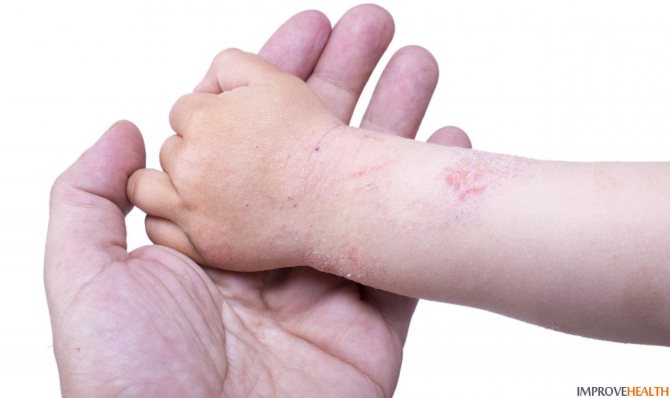
Medical practice shows that neurodermatitis is a seasonal disease. An exacerbation of the pathology is observed in the cold season, while in the warm season the symptoms weaken. In advanced stages of the disease, the patient may develop lymphadenitis, in which inflammation of the lymph nodes occurs. Such a development of the disease may indicate significant disruption of the functioning of internal organs.
Pathogenesis (what happens?) During Neurodermatitis:
Neurodermatitis based on endogenous factors, such as disruption of the normal functioning of the nervous system, internal organs, and metabolism. The influence of harmful environmental factors is of considerable importance. The leading symptom of neurodermatitis is constant and intense itching, which occurs against the background of various neurotic disorders. These are increased or decreased excitability, rapid permeability, emotional lability, asthenia, insomnia, etc. In addition, patients with neurodermatitis have disorders of the autonomic nervous system, which manifests itself in the form of persistent white dermographism, disturbances in thermoregulation, loss of sweat and sebum, pronounced pilomo -tortic reflex, etc.
In some patients, dysfunction of the central nervous system is secondary in nature due to long-term painful itching and insomnia. In these cases, these disorders aggravate the course of neurodermatitis and are essentially pathogenetic factors.
Thus, a kind of vicious circle is formed when severe neurodermatitis worsens nervous system disorders, and these neurotic disorders worsen neurodermatitis. Most patients with neurodermatitis have impaired functioning of the adrenal cortex, thyroid gland, and gonads. Emotional instability, nervous excitability, sleep disturbances caused by intense and prolonged itching are stress factors for the body. They disrupt the function of the adrenal cortex, often reducing it, and with a long and severe course of the disease, they deplete it. Exhausted adrenal glands respond by releasing low amounts of corticosteroid hormones (cortisone and hydrocortisone). Since corticosteroid hormones have anti-inflammatory properties, and the need for them in patients with neurodermatitis is increased, a decrease in their release leads to an increase in the inflammatory response. All this causes an exacerbation of the pathological process on the skin, the appearance or intensification of allergic reactions. This mechanism influences the exacerbation of the process in patients with neurodermatitis after neuropsychic trauma. Patients with neurodermatitis often have increased thyroid function, and often have dysfunction of the gonads, i.e., neuroendocrine dysfunction and allergic reactions play a leading role in the etiology and pathogenesis of this disease. Overstrain of the nervous system for a long time and disruption of the endocrine glands create the background for the development of allergic reactions and neurodermatitis, which is a neurosis of the skin. In neurodermatitis, the body's predisposition to allergic reactions of various types plays an important role.
This is indicated by many factors.
Often, widespread neurodermatitis affects people who had eczema in childhood, which arose against the background of diathesis. In addition to childhood eczema, other types of eczema develop into neurodermatitis over a long period of time.
The cause of limited neurodermatitis and local itching in the anal area is chronic inflammation of the mucous membrane of the lower colon. This inflammation develops against the background of chronic gastritis, enterocolitis, colitis, gastroenterocolitis, which are often accompanied by stool disorders. Constipation leads to autointoxication of the body due to the penetration of toxic substances from the intestines. With diarrhea, the mucus present in the stool irritates the mucous membrane and skin in the anal area, which leads to the occurrence or exacerbation of neurodermatitis in this area.
A background is created for the development of fungal and yeast infections. In addition, anal itching can occur in the presence of anal fissure, hemorrhoids (external and internal), helminthic infestation (primarily pinworms).
The mechanism of limited neurodermatitis of the external genitalia is neurosexual disorders, inflammation of the genitals (acute and chronic), hormonal dysfunction of the gonads.
Drug therapy
Neurodermatitis is not contagious, but requires the use of medications that act both internally and externally. Drugs used to treat neurodermatitis include:
- Antihistamines.
- Glucocorticoids.
- Hormonal ointments and creams.
- Non-hormonal drugs with local effects.
If neurodermatitis develops on the limbs or face, treatment should be comprehensive. All medications must be prescribed by your doctor, as some of them have a number of side effects.
Antihistamines
For neurodermatitis, second and third generation antihistamines are used. They help stabilize mast cells and block histamine. But first generation agents can also be prescribed. They act quickly, but cause drowsiness.
First generation drugs: Fenistil in the form of drops or tablets, Suprastin, Tavegil, Fenkarol.
Ketotifen belongs to the second generation. Used for skin diseases accompanied by bronchial obstruction.
The third generation of antihistamines include: Astelng, Semprex, Terfenadil, Loratadine, Claritin and Gistim. They do not cause drowsiness and act quickly enough.
Glucocorticoids
They are used only in acute cases of the disease, during periods of exacerbation or in the event of urticaria or Quincke's edema. To treat neurodermatitis, semi-synthetic drugs such as Prednidazole, Dexamethasole or Triamcinolone are used. Also, for neurodermatitis, herbal-based drugs can be used, for example, Cortisone, Hydrocortisone.
Hormonal ointments and creams
Use once a day and apply a thin layer to the surface of the skin. In the case of a course of treatment, they do not cause side effects such as skin atrophy or diabetes mellitus. With prolonged use, the release of adrenal hormones decreases, and side effects begin to develop.
Drugs in this group include Lokacarten, Cutivein, Dermovate, Lokoid, Celestoderm, Flucinar, Sinalar.
Non-hormonal topical drugs
Helps soften and dry the skin on the hands, neck and face. Some drugs in this group have an anti-inflammatory effect, for example, Apilak. There are also products based on tar or ichthyol. To relieve itching, Glutamol or Elidel are prescribed.
Ointments such as “Bipanten” and “Panthenol” have a healing and regenerating effect.
The choice of medications and determination of dosage for neurodermatitis should be carried out by the attending physician based on the severity of the disease, the individual characteristics of the patient’s body, the presence of complications and contraindications.
Which doctors should you contact if you have Neurodermatitis:
Is something bothering you? Do you want to know more detailed information about Neurodermatitis, its causes, symptoms, methods of treatment and prevention, the course of the disease and diet after it? Or do you need an inspection? You can make an appointment with a doctor - the Euro lab is always at your service! The best doctors will examine you, study external signs and help you identify the disease by symptoms, advise you and provide the necessary assistance and make a diagnosis. You can also call a doctor at home . Euro lab clinic is open for you around the clock.
Source: https://www.eurolab.ua/diseases/1266
Neurodermatitis is a chronic skin disease of neuroallergic nature. This pathology is characterized by a relapsing course with periods of exacerbation and remission, seasonality and high prevalence among young children.
In most cases, cutaneous neurodermatitis in children occurs under the guise of food allergies and resolves on its own during puberty.
The main symptom of neurodermatitis is pronounced itching. At first, the lesions are not noticeable on the skin and only after some time, due to constant scratching, flat, small nodular rashes with a characteristic shine become noticeable.
Allergic neurodermatitis may be accompanied by other diseases (bronchial asthma, urticaria, etc.).
Compliance with preventive standards
To avoid the development of symptoms of neurodermatitis, it is necessary to prevent this disease. The best method of preventing disease is prevention. First of all, you need to start by studying the history of this disease, as well as the factors that provoked it.
If the main cause of the development of neurodermatitis is hereditary factors , then it will be very difficult to avoid this disease, but compliance with certain preventive standards can significantly reduce the risk of relapses:
- Maintain the intensity of physical activity on your body.
- It is necessary to go to bed and get up at the same time.
- Avoid nervous tension and maintain psychological balance.
- Perceive the flow of life in a positive way.
Despite the chronic nature of the disease, its impact on the body can be significantly reduced. To do this, you just need to eliminate as much as possible those factors that can affect the development of neurodermatitis, fill your life with positive emotions and adhere to a proper diet.
Originally posted 2018-07-04 12:48:05.
